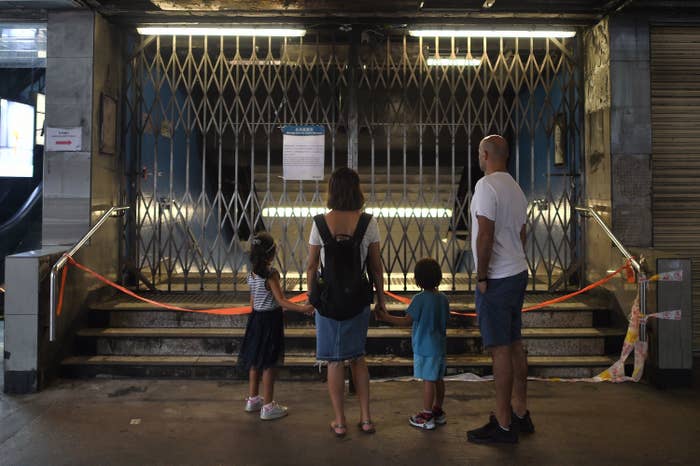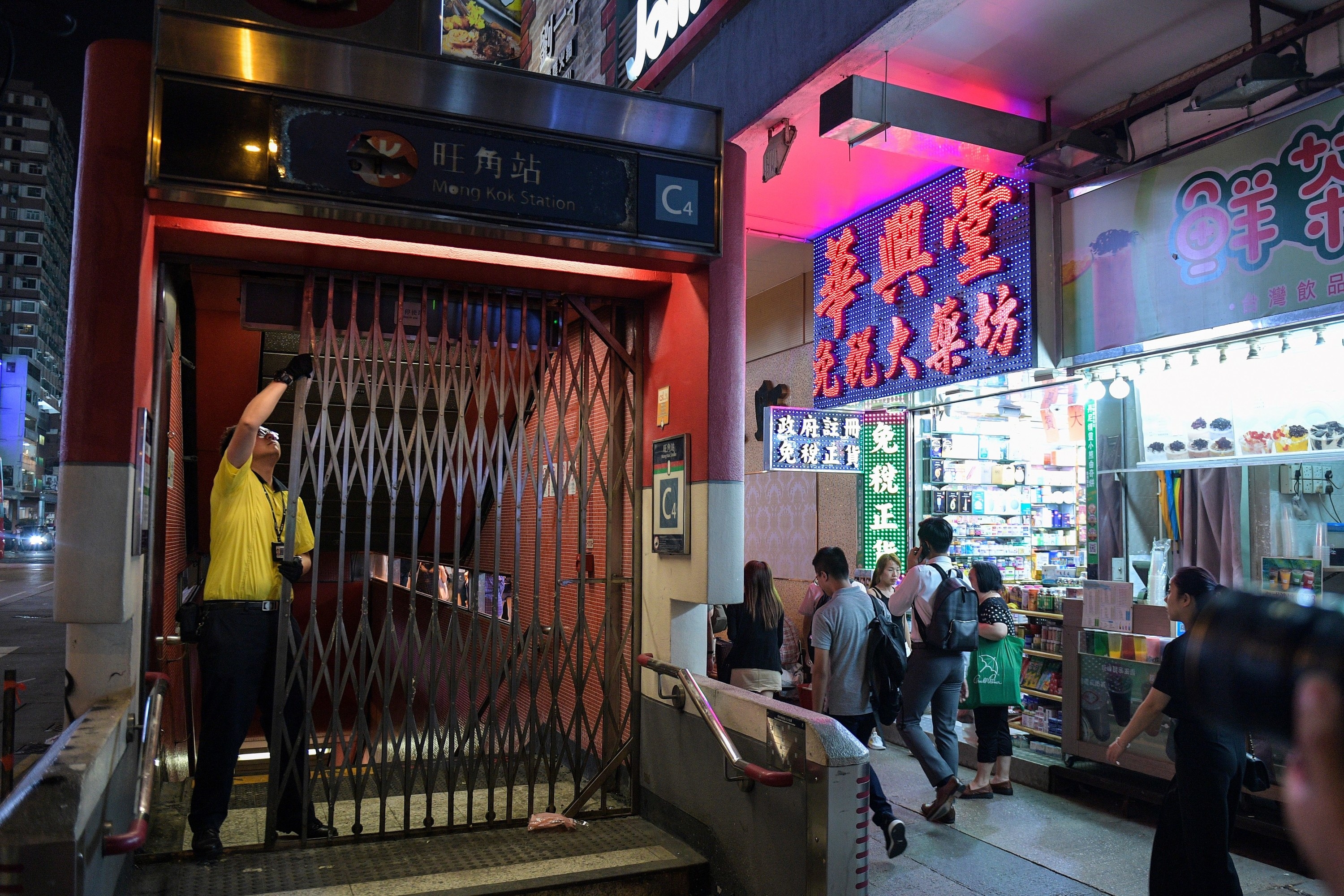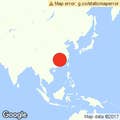
HONG KONG — Hong Kong’s police force requested that the city shutter subway stations or halt train service on at least 10 occasions that coincided with major pro-democracy protests, records obtained by BuzzFeed News show.
Clean, efficient, and quick, the Mass Transit Railway, or the MTR, has long been the pride of Hong Kong. But in recent months, subway signs have been scribbled over with spray paint and facilities have been smashed or burned on protest days as anger has increased toward the company.
A string of early closures in October sparked accusations that the MTR was being used to create a de facto citywide curfew without legally passing one. MTR employees previously told BuzzFeed News that they did not see technical reasons for the early shutdowns and believed that they were being used to curtail attendance at protests. Police have also used the stations as areas to detain protesters in recent months, and have fired pepper spray into several stations as the demonstrations escalated.
The MTR Corporation is a publicly traded company that counts the Hong Kong government as its majority shareholder. Under its operating agreement with the government, the MTR Corporation is required to make “adequate” accommodations for the Hong Kong Police Force as well as submit a report to the government anytime there is a delay or emergency shutdown. (It’s also subject to fines for major delays to incentivize better service.)

In early October, BuzzFeed News requested a copy of all reports submitted to the government for any emergency closures or delays between June, when the protests began, and the first day of October, which saw widespread protests that coincided with the National Day of China. The transportation department did not provide the complete reports but did provide a summary of all of the reports, which BuzzFeed News is publishing in full.
Hong Kong lawmakers have also questioned the station closures. In a November response, the secretary of transportation released a list of dates when the subway was closed, but did not specify that many of the closures came at the request of the police.
One of Hong Kong protesters’ five demands is an independent inquiry into police violence, as the accusations have mounted over six months of demonstrations. On Wednesday, an international panel of experts that was advising the police on a probe quit, citing criticisms that the police had no real independent watchdog capability.
The subway first became a major flashpoint July 21, when a mob of men dressed in white stormed an MTR station in the New Territories region of Hong Kong and beat passengers and protesters indiscriminately with rods. The MTR called the police for assistance and they closed the station. Some details about the incident were disclosed by the MTR.

But records show that police began requesting station closures way back in June. Mass protests in Hong Kong started on June 9 when about 1 million people marched in the streets against a planned extradition bill that has since been scrapped. The MTR reported no delays or closures to the government that day.
Three days later, as protesters tried to push through the Legislative Council building where the bill was being debated, chaos broke out. It was the first time the police used tear gas against protesters. Around 8:30 p.m., police requested the nearest MTR station to the government building to be shuttered. Early the next morning, before 6 a.m., police continued to request that the MTR keep the station shut after protests had subsided.
On June 16, an estimated 2 million residents marched through the streets, but the police made no requests for any station closures. On July 1 police once more made a request to shut down stations on Hong Kong Island — this time just after 7 a.m., hours before a peaceful march proceeded through the city. That night, however, protesters would storm the Legislative Council building, and police would eventually fire tear gas after they dispersed.
Police additionally requested service changes in August and September. The records conclude on Oct. 1, when the city was embroiled in protests over China’s National Day. A young man was shot by police that evening.
On Oct. 5, following renewed protests for a ban on face masks, the city shut down the entire subway system for the first time in the MTR’s history.
Correction: The name of the New Territories was misstated in an earlier version of this post.

